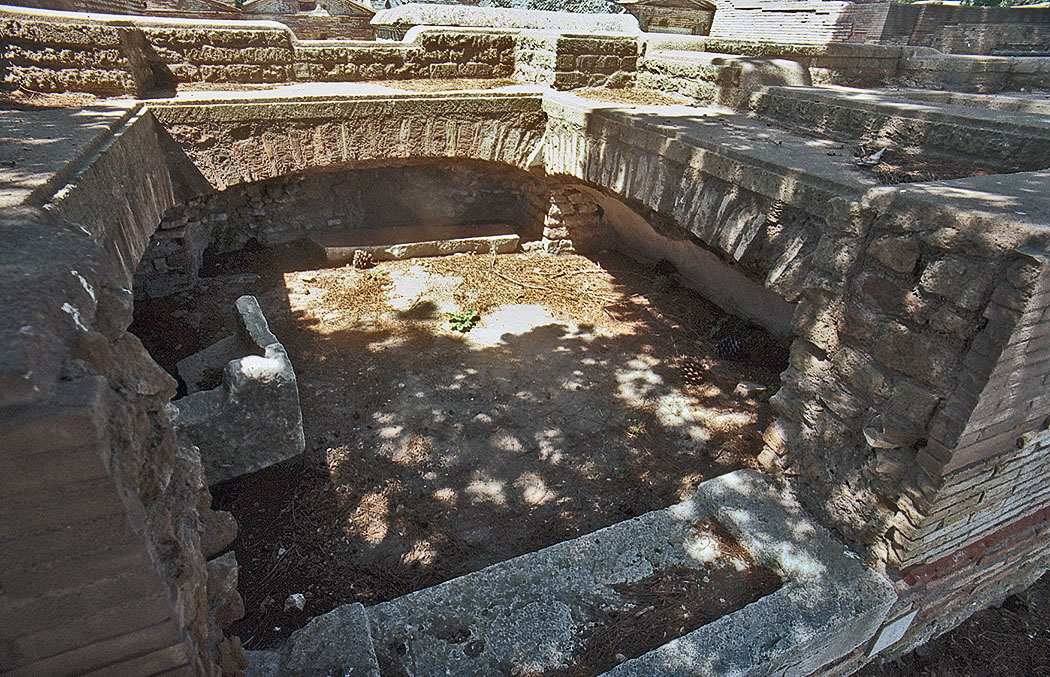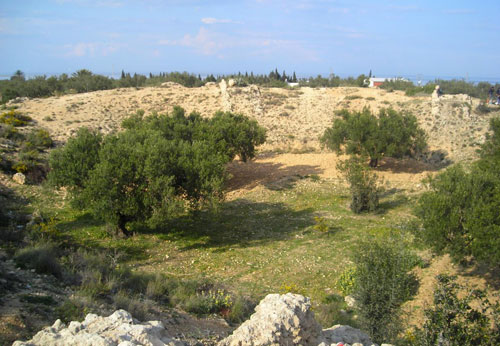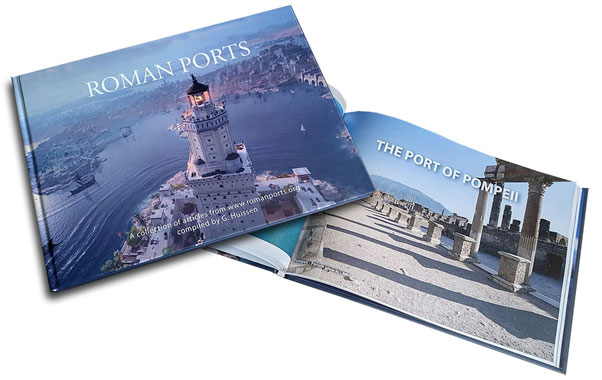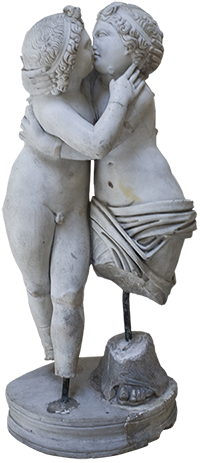Tomb 36

 Tombs 35 and 36 were built as one grave with two burial chambers, each with its own entrance, facing the Via Severiana.
Tombs 35 and 36 were built as one grave with two burial chambers, each with its own entrance, facing the Via Severiana.
Tomb 35 borders on the south to tomb 34. Tomb 36 is detached on three sides and shares with tomb 37 s passage to the graves behind.
Both graves are arranged for inhumation only.
Also beneath the floor burial places were located. The walls have double rows of arcosolia.
Between the rubbish of the collapsed walls marble fragments have been found during the excavations. This points to sarcophagi or to arcosolia with marble covers.
The floor had a black-and-white mosaic. In tomb 35 are still some traces of painted decorations with flowers in the niches.
The tombs date from a rather late period (first half of the third century AD).

- Sources
- Russel Meigs - Roman Ostia, At the Clarendon Press 1973
- Guido Calza - Necropoli nell'Isola Sacra'(1940)
- Dr. Jan Theo Bakker.
- Hilding Thylander - Inscriptions du port d'Ostie (Lund C W K Gleerup 1952).
- Ida Baldassarre, Irene Bragantini, Chiara Morselli and Franc Taglietti - Necropoli di Porto, Isola Sacra (Roma 1996).
Isola Sacra Index

Speciale sectie over de Romeinse begraafplaats van Portus (Engels)....
Read more ...The resurfaced fleet of Pisa

In 1998, an incredible archaeological heritage was discovered by accident near the Pisa San Rossore railway station....
Read more ...Leptiminus

At the site of present-day Lamta on Tunisia's east coast, there was already a port city named Leptis Minor ....
Read more ...Roman maritime trade law

Roman law is the finest monument that Rome bequeathed to Western Europe....
Read more ...Sullecthum (Salakta)

In the Sahel, in the Tunisian province of Madhia, we find by the sea the small town of Salakta....
Read more ...

 We are committed to providing versions of our articles and interviews in several languages, but our first language is English.
We are committed to providing versions of our articles and interviews in several languages, but our first language is English.